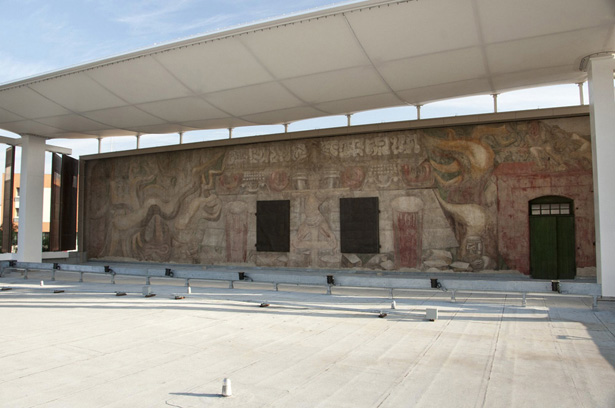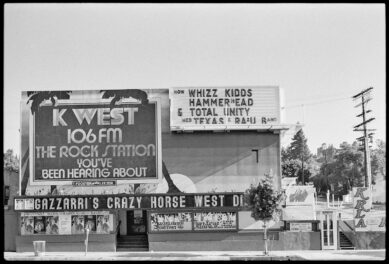
América Tropical after conservation in 2012. Mural © ARS, New York / SOMAAP, Mexico City. Photo © J. Paul Getty Trust
Today is América Tropical’s 80th birthday. Artist David Alfaro Siqueiros unveiled his mural to a disapproving Los Angeles on Sunday, October 9, 1932.
Eighty years later his mural—L.A.’s mural—is now again publicly accessible.
This is, frankly, a day that we sometimes thought might never happen. But the project, through a successful public-private partnership between the City of Los Angeles and the Getty Conservation Institute, has finally come to fruition.
In 1932, when the mural was first unveiled to the public, it prompted immediate controversy. The work—which depicts a crucified Mexican Indian with an American eagle, talons extended above his head, and two revolutionary soldiers closing in from the right, one aiming at the eagle—drew praise for the power of its imagery and artistry. But it also outraged the city’s civic leaders for its political and social content. Within months, the section of the mural visible from Olvera Street, which included the soldiers, was painted over. Within the decade the entire mural was completely whitewashed. The work was virtually forgotten until the 1960s, when the rise of the Chicano mural movement brought a renewed interest in Siqueiros and América Tropical.
Today is different, however. This time the city’s civic and cultural leaders worked tirelessly and brought many resources to bear to make this mural available to the people of Los Angeles once again. It won’t be whitewashed this time.
I remember our meeting with Mayor Antonio Villaraigosa in December 2005 to speak about how the Getty and the City could move this project forward. He simply said, “Let’s get this done.” He has been a stalwart supporter ever since.

América Tropical after conservation in 2012. Mural © ARS, New York / SOMAAP, Mexico City. Photo © J. Paul Getty Trus
Because there are no known color photographs made of the mural prior to its whitewashing, we’ll never really know what the mural looked like that fall evening 80 years ago. But the Getty Conservation Institute’s team—through scientific analysis, careful historic research, and best-practice—has been able to reawaken Siqueiros’s artistry, revive the clarity of the painting’s iconography, and reveal the power of its message. All the while we’ve strived to honor the artist’s hand and preserve the physical history of the mural. Siqueiros is present. The ravages of time are present. The complexity of this mural’s story is present. That is the power of conservation practiced well.
Projects like this one are hugely complex, multidisciplinary undertakings that involve the technical and managerial skills of many professionals. What you’ll see when you visit América Tropical is the product of architects, structural and seismic engineers, chemists, photographers, storytellers, and, yes, conservators. Importantly, a conservation ethos and conservation philosophy informed and guided every aspect of this long process. Despite many challenges—some that seemed insurmountable—the team persevered.
The Getty Conservation Institute is honored to have led the process to conserve and bring América Tropical back to the people of Los Angeles. From its initial involvement in 1988, The Getty has been a tenacious advocate not only for the conservation of the mural but also for making it accessible to the public once again.
You can find more about the project at the Conservation Institute website, and you can visit América Tropical, and the América Tropical Interpretive Center, on Olvera Street in El Pueblo.




Comments on this post are now closed.